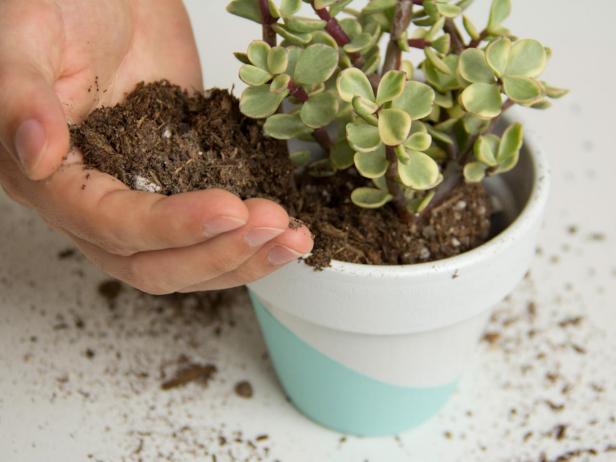
Choosing the right succulent soil can be a daunting process. With so many options to choose from and many plant health factors, it can be tricky to know what soil type is just right. Since most succulents hail from arid climates the key to succulent and cacti soil success is good drainage, low water retention, and medium porosity factors.
Drainage
Drainage holes are very important to the growth and well-being of your succulents. If your pot or planter doesn't have a drainage hole we recommend drilling one yourself or seeking out a new planter or pot with a hole. Drainage holes allow excess water to drain out of the pot and away from the roots of the plant. This prevents the roots from sitting in water, which can lead to root rot. Root rot is a serious problem that is nearly impossible to cure and can eventually be the demise of your succulents.

Additionally, many gardeners recommend placing rocks or pebbles in the bottom of your planter or pot as a substitute for a drainage hole. However, this is not the best recommendation and can actually impede the health of your succulents because water can sit within the pebbles and rocks. Even if the roots of your succulent don't reach into the water-logged rocks, making it prone to root rot, the idle water can cause the growth of bacteria and mold that could eventually kill your succulent or cacti plant.

Organic Soil VS Mineral Ratio
When it comes to your succulent soil ratio there should be more minerals than organic soil in your planter or pot. A good rule of thumb is a 1:2 ratio. One scoop of organic material to every two scoops of minerals. This is because organic soil materials such as potting soil, composites, coconut coir, and clays all have higher water retention. Succulents don’t need high water retention so that's where minerals come into play. Minerals such as sand, perlite, volcanic rocks, and fine gravel are crucial to succulent success. They allow water to filter through merely touching succulent roots rather than drenching them. Minerals have low water retention perfect for succulents so that they don’t become oversaturated or overwatered.
:max_bytes(150000):strip_icc():format(webp)/what-is-succulent-soil-header-990661277a864448b9302295d6464ace.jpg)
Porosity & Texture
When looking into more of the science behind the organic to mineral ratio, porosity and texture are crucial. The porosity of the minerals is much greater than the porosity of the organic materials making the minerals much better for drainage. For instance, if you were to take a cup of clay and a cup of sand and pour a tablespoon of water into each, the water in the cup of sand would make it to the bottom of the cup much quicker than the water in the clay. This example signifies what happens when you water your succulents, if you use too much organic material your succulents will have too much water retention which could lead to health problems. Now, if we were to look at a cup of pebbles vs a cup of sand, the water would flow through the cup of rocks very fast and clump at the bottom, whereas the texture of the sand allows for the water to filter and disperse across the cup before reaching the bottom.

Therefore, based on succulent heritage and need, utilizing a medium mineral texture such as sand is the most beneficial to the growth of your succulents and cacti.
Bottom Line
The bottom line is when choosing succulent soil, choose one that reflects good drainage, has medium porosity, is mineral rich, and has low water retention. These tips will help you to grow healthy and happy succulents that will light up your home or outdoor space.
